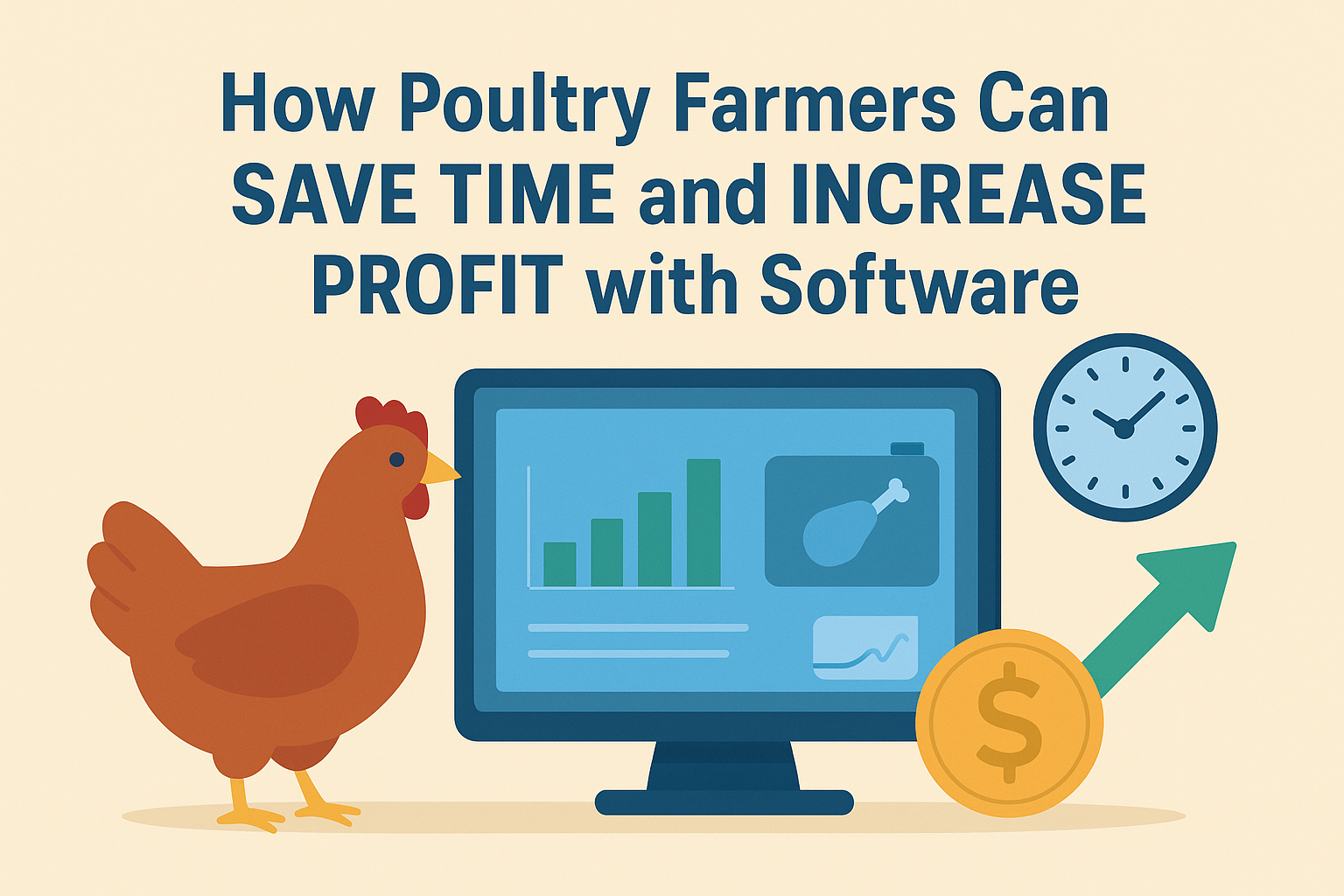Feed Conversion Ratio is a critical problem in livestock production, particularly on commercial animal farms. Feed accounts for almost 70% of the entire cost of production in poultry production, hence the FCR in livestock farming is quite important to a livestock farmer.
What exactly is the Feed Conversion Ratio (FCR)?
The feed conversion ratio (FCR) is essentially the mathematical connection between the feed that an animal eats and the weight that the animal accumulates as a result of digesting the feed. The feed conversion ratio is a metric used to assess an animal's production and efficiency.
Chickens can transform food into meat fairly effectively, with values ranging from 1.50 to 1.90. Modern broiler chickens have been genetically engineered and designed to gain weight quickly while efficiently using all nutrients.
When chickens are well-managed, they are extremely efficient. The key to achieving a good FCR is understanding the underlying aspects that might impact performance and using management approaches that can aid in FCR optimization.
How to Determine Feed Conversion Ratio
The amount of feed taken and the live body weight must be determined in order to compute FCR. FCR is calculated using the following formula:
For example, if a broiler chicken ate 5 kg of feed to produce 3 kg of meat, the FCR is 1.67. (i.e. 5 kg divided by 3 kg).
FCR Factors Affecting Chickens and How to Improve FCR
Consider some of the elements that influence feed conversion ratios in animals, particularly poultry birds. We will also give suggestions for how to enhance FCR.
The temperature
Temperature is a typical element that impacts the rate of feed conversion. Birds are homeothermic, which means they have warm blood. This means that they maintain or stabilise their body temperature metabolically regardless of the temperature of the surroundings.
In cold weather, hens will consume more feed in order to create more energy, with the majority of the energy or calories produced being utilised to heat up the body and maintain normal body temperature. The energy will not be used to create meat (or converted to meat). Optimal temperature permits hens to use resources from their diet to fatten up rather than use them to maintain their body temperature.
Air Flow and Ventilation
Temperature and ventilation are inextricably linked. It is not rocket science to understand that excellent ventilation within the pen will reduce the temperature within the pen or house. Fresh and clean air, as well as feed and clean water, are critical for the growth of chickens.
A poorly ventilated pen may accumulate a lot of ammonia and other hazardous gases, and several studies have shown that ammonia levels larger than 25 ppm, i.e. something nearly unnoticeable by human scent, have a negative effect on FCR in Livestock Farming. It is recommended that chicken growers always air their houses or pens to eliminate accumulated ammonia.
Productivity of Feed
The quality of feed supplied to an animal has a significant impact on the animal's capacity to convert feed. To avoid oxidation, mould, and contamination, the feed should be carefully kept. Ensure that the feeding trays or troughs are watertight, clean, and disinfected.
Inspect your feeding system on a daily basis to ensure that it is in good functioning order. Keep an eye out for locations where feed waste may arise. Keep the feed level in the feeders high to attract younger chicks, but as they develop, you'll need to reduce it to prevent them from squandering the meal.
As the chickens develop, raise the feeders so that the feeder is slightly below their back (at wing level).
water quality
It is critical that the water given to birds be clean and fresh. The hens will be of inferior quality if the water is unclean or polluted. When compared to open or bell drinkers who are exposed to dirt, litter, faecal debris, and feed, a closed water delivery system frequently improves FCR in Livestock Farming.
Diseases and Treatment
Without a doubt, a bird's health effects its FCR since unwell chickens do not grow healthily. Keep an eye out for major indicators of disease and treat sick hens as soon as possible. Vaccines and drugs should be used with caution since adverse responses from inappropriate administration might impact weight growth and conversion.
Feeding Pattern Timed feeding improves FCR. Chickens can be fed 3-5 times each day. There should be breaks between feedings (like 2-3 hours). This allows the feed in the crop to be digested and increases the birds' desire for additional feed at the next feeding period.
When the feeder is empty, birds normally rest, strengthening their feed conversion ratio since the body is quiet and allowing the feed to be utilised in the body.
Luminous
Different light levels in the enclosure can also have an impact on the FCR of chickens, particularly broilers. Bright illumination encourages bird activity while also assisting them in locating food and water. After 10 to 14 days, the illumination might be reduced since low levels of brightness comfort the birds and reduce their activity, resulting in greater weight growth.
Noise Anxiety
Birds respond positively to positive treatment. Those who are cared for in a nice and tranquil atmosphere do far better than those who are cared for in a terrible and loud setting.
Birds respond positively to positive treatment. Those who are cared for in a nice and tranquil atmosphere do far better than those who are cared for in a terrible and loud setting.
Excessive stress leads hens to expend more energy, affecting development and feed conversion. When working in the pen, take care not to create too much noise and to avoid disturbing the hens. Unnecessary exercise causes hens to squander energy that could otherwise be utilised to acquire weight.





